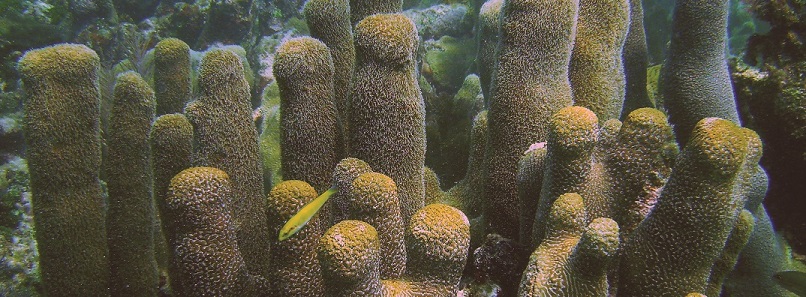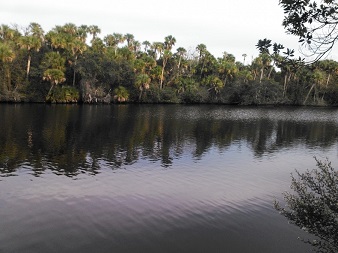- ABOUT US
- PROGRAM AREAS
- CONSERVATION APPROACH
- EDUCATION
- MULTIMEDIA
- The group collected water samples during the rainy season in late summer 2015 and the dry season in spring 2016, from both the St. Lucie estuary and the reef area, to examine levels of carbonate, nutrients, and chlorophyll.
- The group also developed a computer model that created a three-year simulation of the physical and biogeochemical aspects of the St. Lucie River plume, from 2013 to 2015.
Over the River and Through the Corals

Coral reef ecosystems near the coast are often introduced to freshwater, nutrients, and pollution from nearby rivers and lakes. In Florida, the northern section of the Florida Reef Tract is near the mouth of the St. Lucie River, which has been used to reduce rising water levels from neighboring Lake Okeechobee. The river empties into the St. Lucie estuary and the Florida Reef Tract, bringing large amounts of freshwater (known as plumes) and high levels of nutrients into the reef ecosystem. This plume can negatively affect water quality on the reef by promoting phytoplankton blooms and changing carbonate chemistry which is critical for hard coral development.
In 2015, the NOAA Coral Reef Conservation Program awarded a grant to Florida Atlantic University’s Harbor Branch Oceanographic Institute to study the potential impacts of the St. Lucie River plume on nearby coral reefs. The group, led by Doctors Mingshun Jiang and Brian Lapointe, completed two parts of the study.

The combined results showed that the St. Lucie River plume greatly affects the water quality of the nearby coral reef ecosystem by supporting phytoplankton blooms, as well as by heavily influencing the carbonate chemistry. The study brings a better understanding of the complex relationship between freshwater plumes and coral reef health in Florida, and can provide better insight into how to best manage land-based sources of pollution to conserve coral reefs.
For more information on the NOAA Coral Reef Conservation Program’s funding opportunities, visit https://coralreef.noaa.gov/conservation/funding_welcome.html.
About Us

The NOAA Coral Reef Conservation Program was established in 2000 by the Coral Reef Conservation Act. Headquartered in Silver Spring, Maryland, the program is part of NOAA's Office for Coastal Management.

The Coral Reef Information System (CoRIS) is the program's information portal that provides access to NOAA coral reef data and products.
Work With US
U.S. Coral Reef Task Force
Funding Opportunities
Employment
Fellowship Program
Contracting Assistance
Graphic Identifier
Featured Stories Archive

Access the archive of featured stories here...
Feedback
Thank you for visiting NOAA’s Coral Reef Conservation Program online. Please take our website satisfaction survey. We welcome your ideas, comments, and feedback. Questions? Email coralreef@noaa.gov.
Stay Connected
Contact Us
NOAA’s Coral Reef Conservation Program
SSMC4, 10th Floor
1305 East West Highway
Silver Spring, MD 20910
coralreef@noaa.gov
